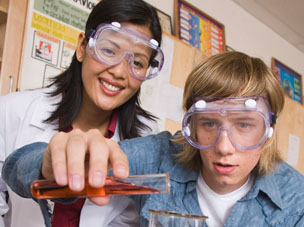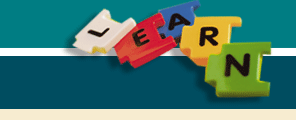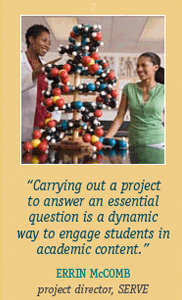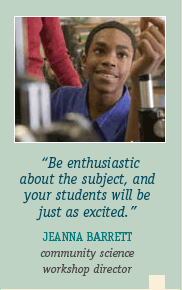 |
|
 |
 |
|
||||
 |
Using Project-Based Learning in Science Which of these activities will students probably find more interesting: conducting research and diagnosing the illness that caused a teenage girl to faint, or reading about the symptoms and treatment of diabetes in a textbook? Most of us would choose the first option, which is an example of project-based learning, an instructional strategy that allows students to learn by exploring real-world problems. Project-based learning is one of the promising practices in the National Partnership’s Afterschool Training Toolkit for science. Although project-based learning makes most content areas more meaningful to students, afterschool science instructors will find that allowing students to experience science in real-world situations helps them understand and remember scientific concepts. You can learn more by exploring the Exploring Science Through Projects and Problems practice in the science toolkit. The activity in which students conduct research to diagnose diabetes is called “What Happened to Mya?” If you are interested in trying project-based learning in your afterschool program, here are some things to keep in mind: Talk to your school-day teachers. Find out what science concepts, skills, and standards students are studying that might lend themselves to science projects. For example, raising fish from eggs can build on school-day biology study about habitats, species, and life cycles. Work with students to select a topic that interests them. Ask students to brainstorm a list of topics that interest them and then determine how they are related to science. Make sure you have enough time for an ongoing project. Project-based learning works best when students can work on projects in a regular, ongoing way as some projects can take several days or weeks. Discuss the project and make a plan. Identify what students will do, make a project plan and timeline, identify resources you will need, and then conduct the project. |

My House Center for Learning
|
|
|
|
|
 |
|
|
Questions or comments should be directed to: Laura Shankland |
Copyright © 2007 by SEDL . This newsletter was produced in whole or in part with funds from the U.S. Department of Education under contract number ED-01-CO-0057/0001. You are welcome to reproduce issues of AfterWords and distribute copies at no cost to recipients. Please credit SEDL as publisher. Link to PDF versions of AfterWords is available here. For additional uses, please fill out and submit a copyright request form. |





